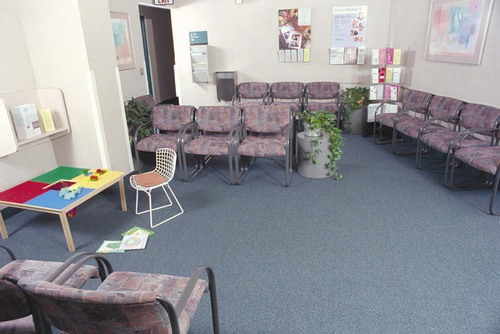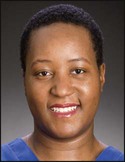Office staff need to arrive at the medical office early enough to make sure the office is prepared for the patients. The medical assistant is often responsible for opening the office (Procedure 37-1). Several activities must be performed immediately: • Disarming the alarm system (if the office has one) • Unlocking the door through which patients enter • Unlocking file cabinets, medical record files, and medication cabinets • Turning on all of the office equipment that will be used during the day, such as computers and copy machines It is helpful to take a minute at the beginning of the day to organize the day’s tasks. This includes reviewing the appointment schedule and noting deviations from the routine schedule, such as physicians who are out of the office for all or part of the day. If the medical office uses a manual day sheet, it must be dated and prepared for use. (This is discussed in detail in Chapter 44.) Reminders about the day’s activities may be stored using an electronic task system and/or a physical tickler file. A tickler file is a set of 43 file folders, one for each month (for a total of 12 folders) and an additional set of 31 folders for the days of the current month. Written notes, bills to be paid, receipts, or other items are filed in these folders to “tickle” the memory at the time when they must be handled. (Tickler files are also discussed in Chapter 41.) The waiting room, reception area, and examination and treatment rooms all need to be checked for the following: cleanliness, neatness, correct temperature, and appropriate reading material. The medical assistant should make sure that the cleaning service has cleaned all parts of the office and emptied the trash. The medical assistant may need to turn on a television, radio, and/or DVD player in the patient waiting room. Magazines should be stored neatly and replaced with current issues as needed. If there are toys in the waiting room, they should be cleaned regularly and stored neatly. Holders in the waiting room that contain information brochures for patients should be restocked and arranged neatly (Figure 37-1). At the end of the day, the activities of the morning are reversed. Many medical offices run the autoclave in the afternoon so that items can dry overnight. Medical records for the following day may be created for new patients and removed from the files for established patients. This is often done in the afternoon because it leaves more time in the morning. Before leaving the office, the medical assistant must perform the following tasks (Procedure 37-2): • Prepare the bank deposit and balance the cash drawer. At the end of the day, the money in the cash drawer must be balanced against cash receipts. Any amount above the usual change fund is added to the bank deposit (see Chapter 44). • Make a backup copy of the main computer hard drive if the office does not subscribe to an online computer backup service. • Check the fax machine for faxes that have come in during the day. • Turn off computers, printers, copiers, and other equipment (with the exception of the fax machine). • Change the telephone to the night message or call the answering service to tell them the office is closing. • Lock the door through which patients enter. • Lock file cabinets, medical record files, and medication cabinets. • Make sure the coffee machine or other kitchen equipment is turned off. • Unplug equipment, such as a toaster, that might be a fire hazard. • The last person to leave the medical office makes sure the door is locked and sets the alarm system.
Patient Reception
LEARNING OBJECTIVES
PROCEDURES
1. Describe how to open the medical office and prepare for the day’s activities.
Open the office.
2. Compare and contrast the tasks necessary to open and close the medical office.
Close the office.
3. Discuss measures to protect the confidentiality of patients in the reception areas.
4. List information that must be obtained from new patients.
Obtain new patient information.
5. Describe the proper procedure to check in a new or established patient.
6. Discuss procedures that are necessary to validate that a patient’s insurance will pay the bill.
7. List information that must be given to a new patient about the practice.
Explain general office policies and procedures.
8. Describe different types of informational materials for new and prospective patients.
Introduction to Patient Reception
Preparing for Patients
Opening the Medical Office
Preparing for the Day’s Activities
Checking the Office and Waiting Room
Closing the Medical Office
![]()
Stay updated, free articles. Join our Telegram channel

Full access? Get Clinical Tree


Patient Reception
Get Clinical Tree app for offline access



